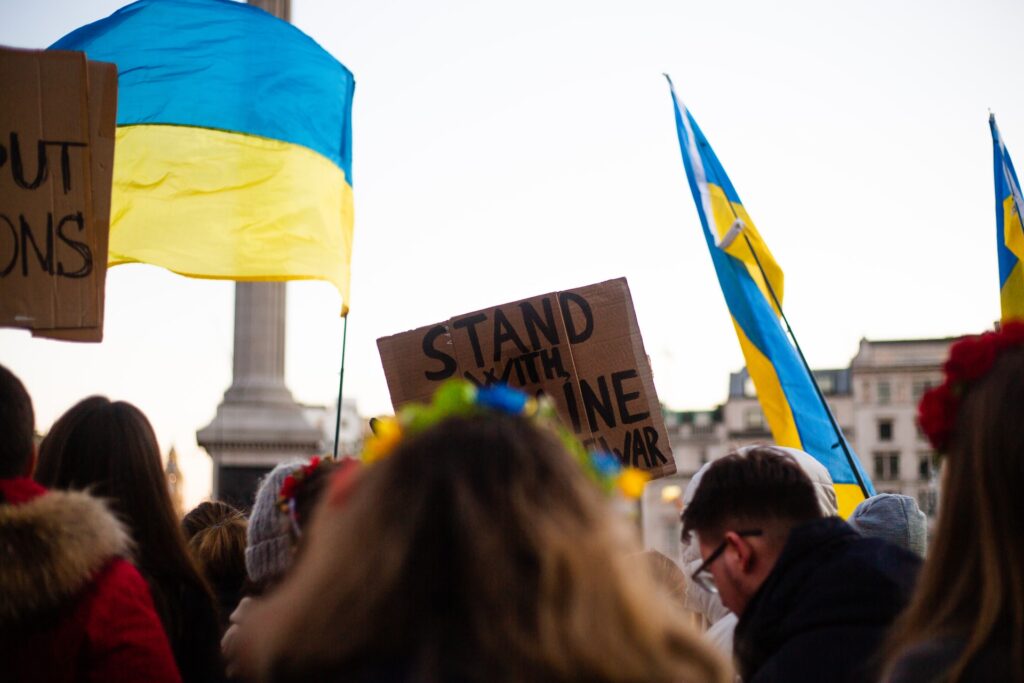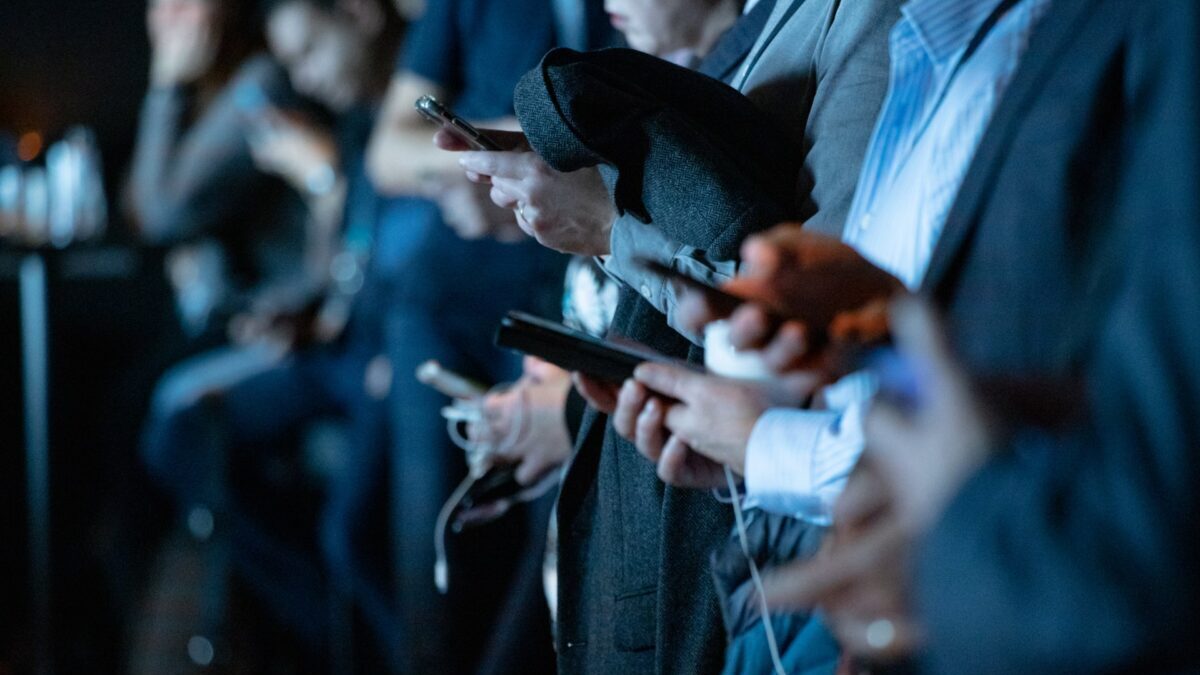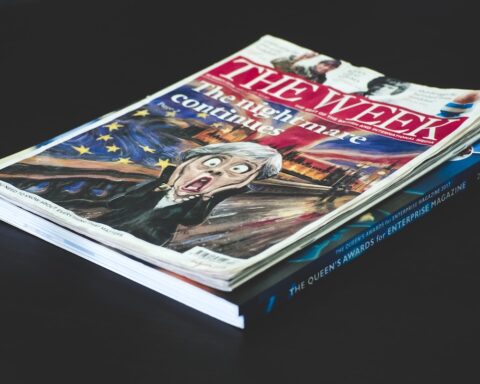February 24th, 2022. The world awakens to news that is about to shake Europe to its core. Following an increasingly tense few years, Russia has launched a large-scale attack on Ukraine. As bombs continue to fall over Kyiv, people around the globe scroll tirelessly, hungry for any piece of information.
Major and independent news outlets alike begin to churn out updates about what would become the first day of the war. In all corners of the world, people remain glued to their phones and laptops.
And as they get ready for the day, as they work, as they look for ways to help, they continue to turn to what many deem the most accessible source of information. The one that can provide instantaneous updates in an easily digestible format: social media.
“On Thursday morning, long before I loaded up the first of many news articles about Russia’s attack on Ukraine, I got the news on my phone. Twitter set up an event full of tweets from news outlets and government officials. […] A friend in a group chat snapped a photo of his TV, which showed an image on cable news of cars leaving Kyiv. Notifications from other platforms soon followed. Information about Ukraine had taken over my home screen.” writes Angela Watercutter for Wired.
Then versus Now
News consumption in the 21st century looks very different than it once did; there is no doubt about it. The picture of the nuclear family watching the evening broadcast gathered around the TV is increasingly harder to come by. The early-morning, newspaper-reading commuter is often surrounded by people scrolling on screens of all sizes. While the information itself might not have gone through drastic changes, the medium certainly did.
Most available data points toward a stead-fast preference for established news outlets as far as sources go. At the same time, it underlines a proclivity for modern platforms and formats, such as social media feeds, newsletters, or podcasts.
One could argue that in 2022, new media is such an integral part of our everyday lives that it’s becoming old news. However, while its layered influence has been at the center of research for many years, the way it stands to affect us when it comes to communication about conflict is still something that scientists and lay-people alike are in the process of exploring.
With global disasters on the rise in recent years, Web 2.0 has cemented its key role in the way we relate to crises. To say that the ramifications of this phenomenon are vast would be a huge understatement.
One only needs to think of events such as the uprisings of the Arab Spring or the Chilean Winter to get an idea of just how relevant of a factor social media can become. And with players such as Twitter banning political ads amid Donald Trump’s re-election campaign in 2019, or tech giants such as Meta reconsidering their policies in the wake of the Rusia-waged war, one can only assume that the full scale of the implications is yet to reveal itself.
What changed?
The rise of Web 2.0 is linked to countless trends where the production and dissemination of information is concerned. If up until the mid-2000s audiences were largely absorbing material in a passive way, through mass-media channels, the present can be characterized by an entirely new layer of systems, roles, and technologies.
Times of unrest seem to concentrate and focalize these different aspects, as well as reveal the magnitude of their impact. And with what could already be considered the most documented war in history still waging across Ukraine, the role of social networks should not be ignored.
In 2022, the speed at which news is produced and published is inextricably tied to its value.
Acceleration
Everything is faster on the internet, and that couldn’t be truer when it comes to reporting on crisis situations. It took less than an hour for major outlets to break the news about Russia’s first strike on the Ukrainian capital. Over a month since the beginning of the war, the biggest international players continue to offer live updates through their websites, apps, and of course, social media feeds.
This is hardly an isolated case. In an era of lightning-speed communication, platforms such as Facebook, Twitter, and Instagram routinely enable publishers to share updates at any time, as often as necessary. The formats allow journalists to publish the most important bits of new information before the entire story has emerged.
One could argue that few things happen without there being some sort of immediate reporting about it. In 2022, the speed at which news is produced and published is inextricably tied to its value. This doesn’t only speak of the changes the media landscape has had to go through to facilitate such practices, but also of the way it affects its audiences.
Around the world, users can consume information at an unprecedented pace, and they can do so all the time. While this can certainly have damaging effects on general audiences, for those directly affected by the crisis, fast reports can serve as tools to figure out protection strategies or organize responses.
Decentralization
While established news outlets seem to have remained the go-to source of information for the majority of the population, Web 2.0 has allowed, at least in some ways, for foci to shift and for new, independent actors to emerge in the field.
Where mass media used to allow for only a few major players to control the market and the type of news broadcast, social networks have facilitated the rise (and fall) of new sources, which cater to different kinds of audiences.
Some tend to focus on local, first-hand accounts; others make it a point to provide a subversive view of current events or a new take on narrative journalism. Some are a one-person operation, others a larger venture. What sets them apart and what they have in common is their commitment to doing things differently and changing the way traditional media portrays events of global importance.
While major publications’ correspondents have been on the ground in Ukraine in the past weeks, reports have also come from the most varied, unexpected sources, such as local photographers, influencers, or citizen journalists who have made it a point to provide accurate information about the situation at hand.
Nonetheless, one cannot deny the fact that, in spite of recent progress, this new era of the internet has cemented a handful of countries and actors as focal points in the global media landscape. Many have thoughtfully critiqued the fact that, while reporting about the war in Ukraine has become prevalent, conflicts that have been raging in the Middle East or the Global South for decades go largely unnoticed.
What remains clear, however, is that social networks have allowed players that might not have previously had a voice to become relevant.
User-generated content is here to stay, and it’s already left quite a mark.
Personalization
The 2020s have been deemed the age of ‘everything personal’ when it comes to internet content. One needn’t look any further than the glorious rise of TikTok, and the continued popularity of platforms such as Reddit, to clearly see that user-generated content is here to stay, and has already left quite a mark.
While not immediately obvious, this impacts news production and consumption as well. Recent years have marked the first moments in history when reporting has not been limited to major publications that have, by nature of their activity, access to breaking information.
Nowadays, it’s real people, experiencing everything first-hand, that tell their stories online. In 2022, this has meant that one can find absolutely everything on the internet – from live feeds of bombings and shelled buildings to first-person accounts of what it’s like to live in a bunker – most of it stems from regular citizens documenting on-site.
As major news outlets continue to provide a much-needed bigger picture, as well as data on the current situation, its unique takes such as those of the young adults sharing their current life in Ukraine on TikTok, or influencers that have shifted their focus to the ongoing war that offer audiences everywhere something new: a direct emotional line to what is happening, and an occasion to examine current events in a different way.

In the era of online communication, attention is currency, and the potential to exploit it for financial gains is immense.
Why does it matter?
Never before has the available technological infrastructure catered so well to the needs of the masses. Thus, never before have we been able to witness the sheer power of the collective to such a degree. The way in which information is able to spread has been a catalyst for social movements of all kinds, and the current situation is no different.
“When the Twitter account of the government of Ukraine tweeted asking for donations in cryptocurrencies, people contributed $9.9 million in two days. When Ukraine’s minister for digital transformation announced the creation of a volunteer “IT army” for cyber defense and attacks, 175,000 people joined the Telegram channel. Since then, they’ve conducted distributed denial-of-service attacks against more than 25 Russian websites.” writes Casey Newton for The Verge.
Across the globe, people have mobilized and raised hundreds of millions in donations. Countries such as Romania and Poland have taken in more than three million Ukrainian refugees, largely thanks to the efforts of volunteers that coordinate via Facebook groups or Telegram chats. The fact that news can travel fast, and that anyone can have access to it, has allowed people everywhere to become participants and, where possible, use their privilege for good.
Inside Ukraine, where military and civilians alike are fighting back against Russian troops, social media has proven to be vital. Ukrainian President Volodymyr Zelensky’s online presence, complete with regular press updates and video material, has played a key role in rallying international support and maintaining morale.
Similar reactions, albeit of less magnitude, have been observed in recent years. And while the internet follows traditional media patterns, in that it forms filter bubbles around matters that are relevant to only a handful of central actors, it has definitely helped make geopolitical issues more relevant to the average citizen.
What are the dangers?
As with anything that can’t be fully monitored, social media poses its own set of dangers. The most notable one, which organizations around the world have been trying to combat for years, is the prevalence of fake news.
With non-state, independent actors at play, their capacity to disseminate misinformation is immense. And with people finding less and less time to read the full story, few bother to check credentials before engaging. A notable example from recent weeks is the number of deepfakes of President Volodymyr Zelensky that have been circulating online, and that platforms such as Twitter are trying to do away with.
Similarly, diverting attention is easier than ever before. For people that rely solely on social media to get information on what is going on around the world, the danger of losing focus as soon as the content strategy shifts is a real concern. In the era of online communication, attention is currency, and the potential to exploit it for financial gains is immense.
What’s more, consuming news via social media can lead to a false sense of understanding and security. With political ties being more convoluted than ever before, understanding the full context takes research and the ability to be open to nuance, which social networks often remove. Considering how algorithms contribute to the forming of echo chambers, the probability of any given user risking exposure to a single, more than likely skewed perspective is high.
Last but not least, scientists warn of the psychological effects of witnessing war through social media. With people’s mental health already plummeting after two years of dealing with a global pandemic, and compassion fatigue a real issue among all age groups, the way we select the information we consume should remain a priority.
What we’re left with
There are many questions that remain and which will continue to guide researchers in the months (and years) to follow. How are major players reacting to the war waged by Russia, and what will the implications be? Will this change the internet landscape for good? Will social media change us? Are there new things we should worry about? The answers will only become clear in time.
As we continue to observe the way in which events of global relevance unfold on our social media feeds, it becomes crucial to develop some critical assessment mechanisms, both on a personal and collective level.
Situations such as the war in Ukraine are incredibly sensitive and should be approached with utmost seriousness. However, the speedy technological and social developments that we’re witnessing make it impossible for any average user to be aware of all the effects and implications of their news consumption.
A way to combat the fog and ensure that we are not falling prey to the dangers of the online is to employ a set of questions that can help form a critical lens through which to assess all information. Start with the ones below, then adapt and modify them according to your own needs and habits.
- Is this a trustworthy source?
- Who has collected this information and how?
- Why am I reading this? Who is profiting from it?
- What are my news sources apart from social media?
- Am I being careful in the way I expose myself? Am I prioritizing my mental health?
About the status quo
Knowledge, as they say, is power. Here are some trustworthy sources you can follow to stay up-to-date with the war in Ukraine.
Twitter: The Kyiv Independent
Instagram: Salwan Georges for The Washington Post
Podcast: State of Ukraine by NPR
Newsletter: Russia-Ukraine War Briefing by the NYT
Livestream: Reuter’s Livestream of Kyiv’s Maidan Square
Header photo by Camilo Jimenez / Unsplash.






Social media are easily to access so people can see posts and comments that others share. It could cause misunderstand information and start making wars.
This is an interesting article that explores the way that social media has changed the way we view conflict. It looks at both the positive and negative aspects of how social media can affect our mental health perceptions of war and other conflicts, and provides a thorough analysis of the impact of such technology on our views. The article is well-researched and draws on a variety of sources to support its conclusions. Overall, this is an informative and thought-provoking read.